Pushed by COVID, Trailblazing Teacher Takes Giant Leap Outdoors
by Brenda Ortega
MEA Voice Editor
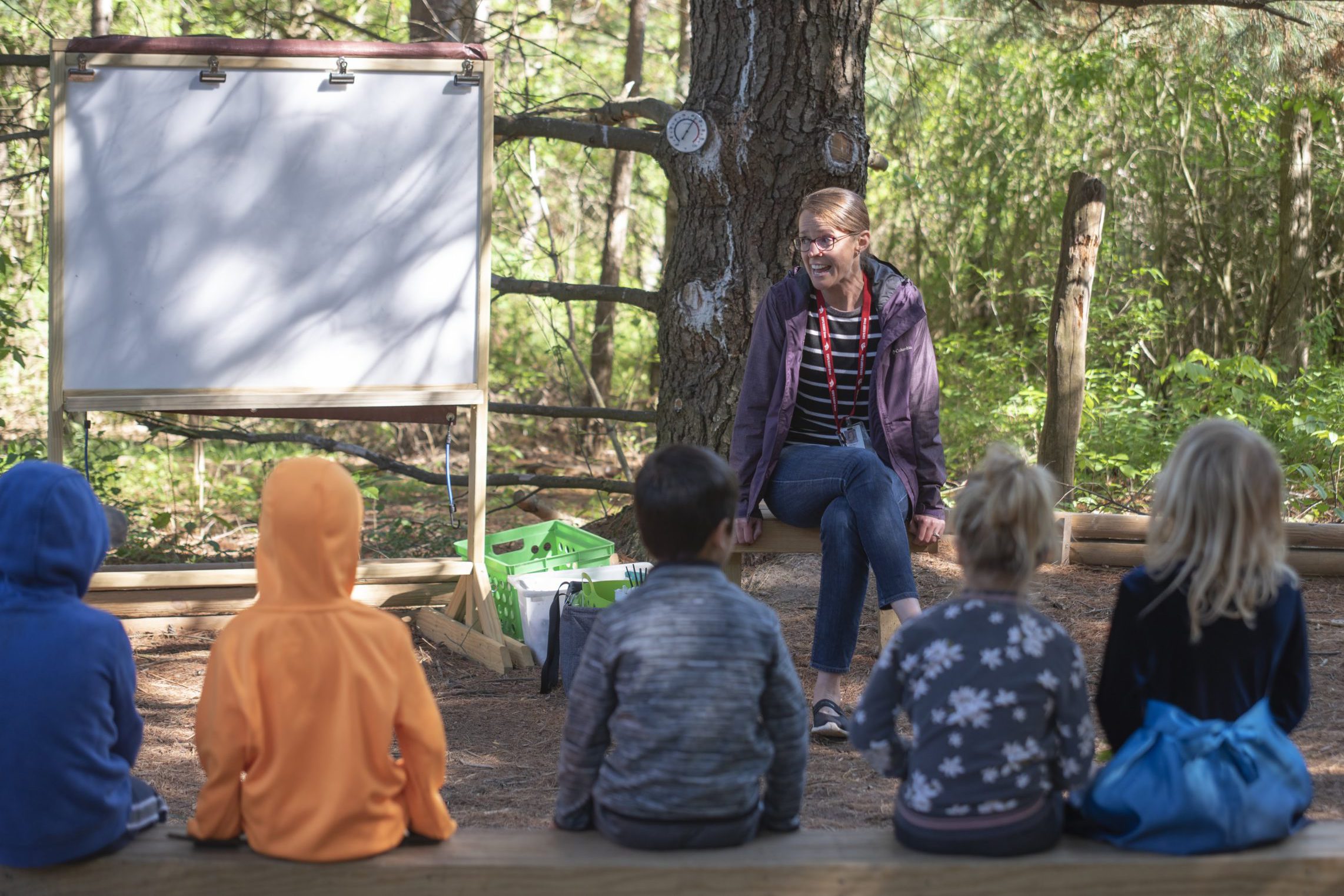
Two years ago, in October 2019, MEA member Audrey Debri took a step toward a long-dreamed-of goal to spend more learning time outdoors with her Young Fives students.
In a clearing underneath tall conifer trees on property next to the K-1 building where she works in Cedar Springs, Debri and her husband built permanently rooted benches, standing tables, and a whiteboard to create an enchanting pine-needle-carpeted classroom in the forest.
Throughout her 10 years at Cedar Trails Elementary School, Debri had regularly taken her classes outside to use a system of nature trails. But in that first year with the new outdoor classroom, she and her students also enjoyed being able to gather and work on a lesson or activity.
Then the pandemic hit, shutting down in-person school and interrupting her use of the space as spring arrived. So the following fall—amid COVID restrictions one year ago—Debri made a giant leap.
She went full-out (pun intended). For 80 percent of every school day—through sun, rain, wind, snow and everything in between—she and her students played and learned outdoors (only excepting for lightning and below-zero temperatures).

“I was always planning to eventually end up there, but COVID kind of forced my hand,” Debri said. “I thought, OK, well. There’s this now, so we’re just going to go for it. But it’s been years in the making.”
Two operating philosophies governed her first year teaching full-time in the great outdoors. Firstly, she believes—and often repeats—“There is no such thing as bad weather as long as we’re wearing the appropriate gear.”
Principal Beth Whaley helped to provide rain boots and ponchos, and grants from the district’s foundation purchased waterproof snow boots and mittens.
Secondly, from the beginning Debri understood a truth she would soon grapple with on a new scale: “Anything that can be taught indoors can also be taught outdoors—you just have to be creative and think outside of the box.”
The biggest difference being out in all conditions is in planning materials, which she transports via wagon, large shoulder bag, and/or small backpack. The classroom is a several-minute walk away from school grounds down groomed paths with wood planks over wet spots.
She shares her knowledge with other Cedar Trails teachers who also schedule time in the outdoor spaces through weekly sign-up sheets.
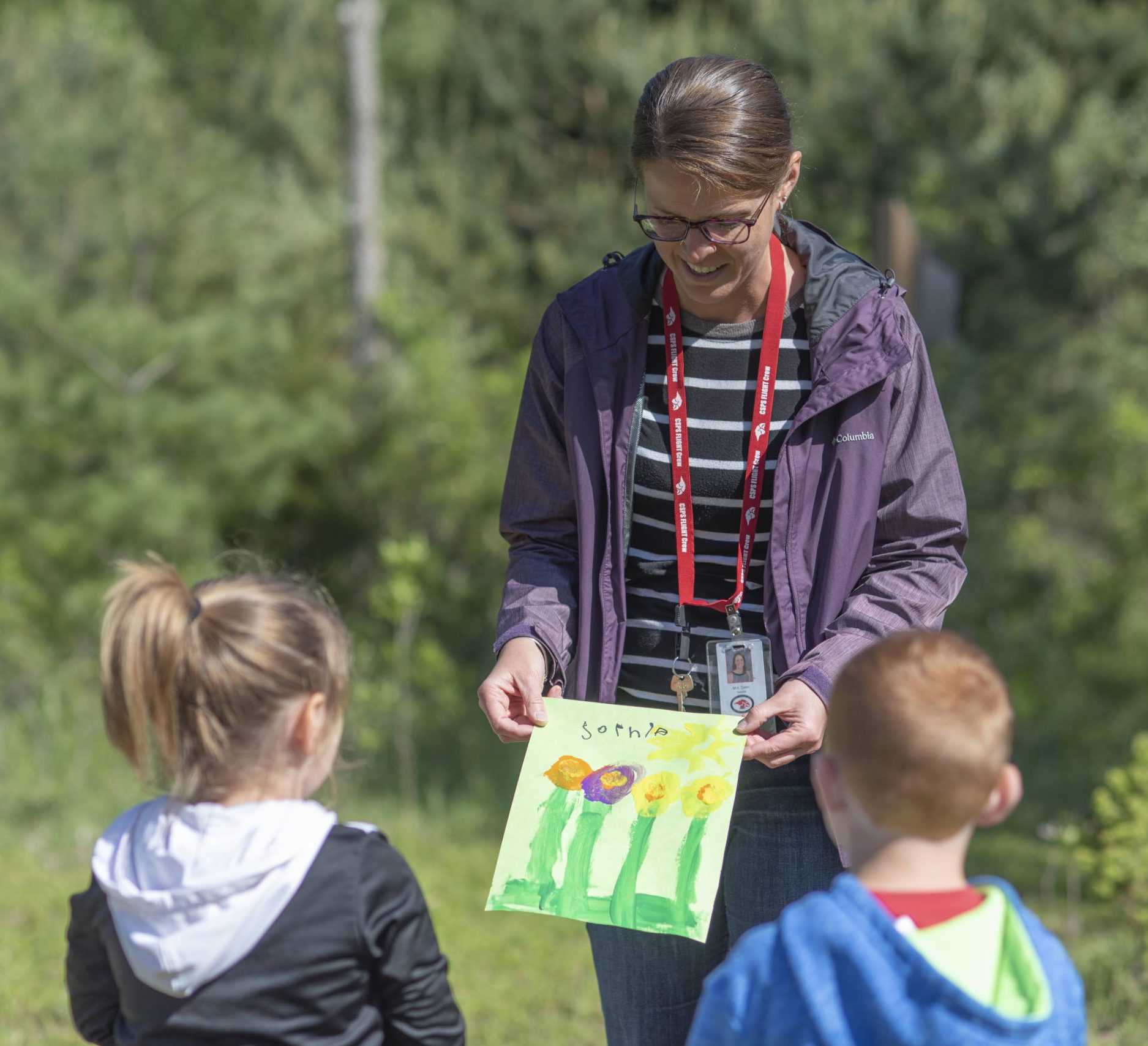
Dry-erase boards don’t work in harsh cold—markers freeze. Paper and pencil with clipboards? Not if it’s too wet or windy. But sticks can write in snow, and watercolor paints make great snow-art creations.
The payoffs can be huge. Research shows that regular outdoor education opportunities can improve students’ problem solving, social skills, self esteem, motivation to learn, and emotional regulation—and Debri has seen it first hand. She had few behavior problems last year, and test scores for her Young Fives students were higher than when she taught kindergarten, she said.
Students in her class learned about the biology of bees and other insects, spiders, and snakes in literacy and science lessons that helped them learn how to share and be good stewards of the environment next to critters they used to fear.
“We learned a lot about insects and how to investigate them and respect them and keep them safe. And we came across snakes quite often, so we read a lot of books about snakes and had discussions about them and all the amazing creatures that live in the space we learn in.”
Lessons followed by free play and exploration is key to her teaching. “Play just naturally ties in standards associated with reading and writing and social studies and science and math. The bulk of my students’ day is play. It’s crucial for children’s development. They’re wired to learn that way.”
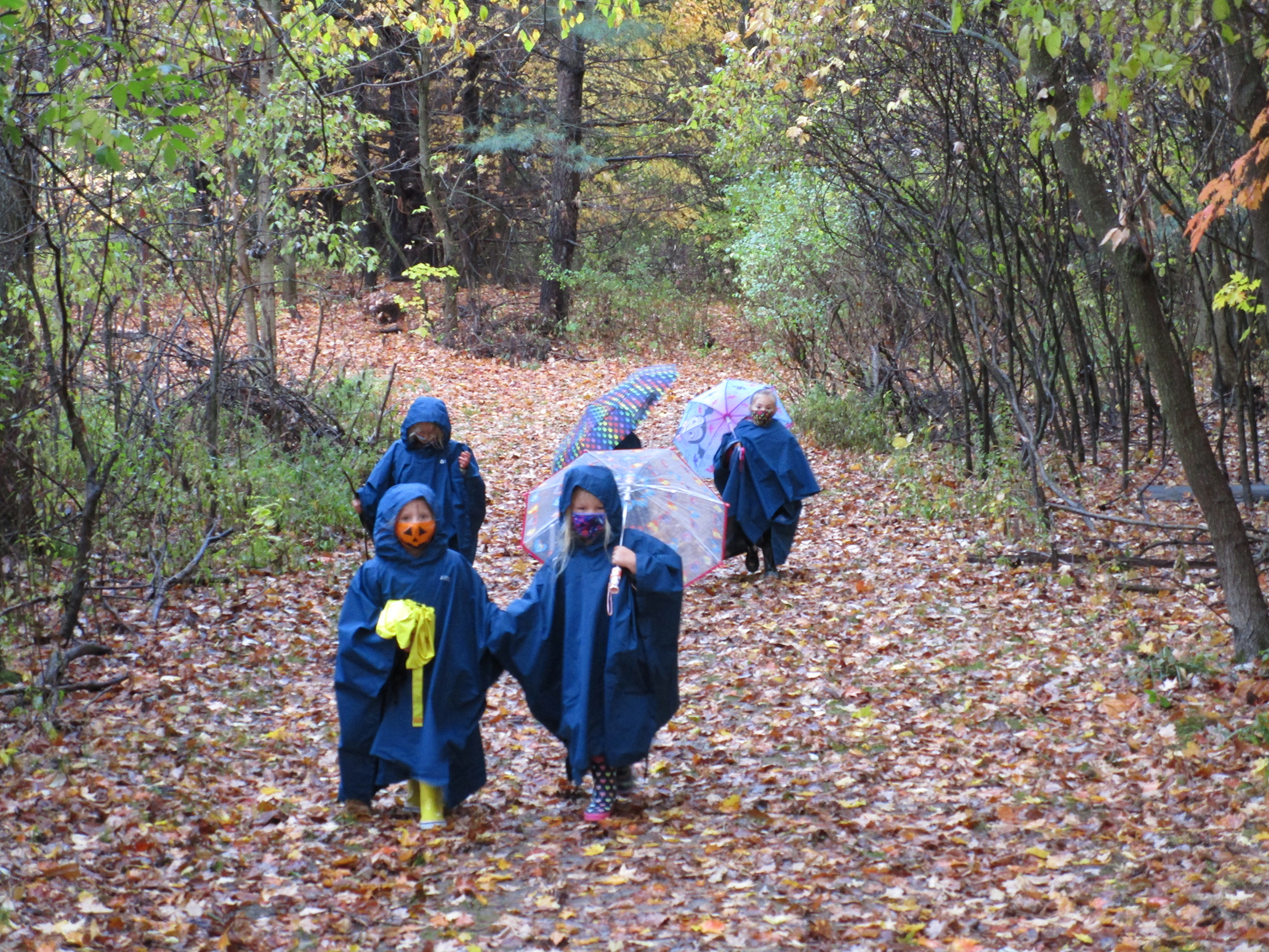
Last winter, Debri and her husband Tom completed phase two of the outdoor learning area with the addition of play equipment in an open meadow next to the classroom, including a kitchen sink, stove with dishes and utensils, large wooden blocks, an art easel, magnet board, dry-erase board and weaving station.
During play time, children choose what they want to do, making snow or mud pies in the kitchen, creating art on the easel, running and chasing, or crouching in discovery of a new bug. As weather got cold and wet, the children made paths into covered areas nestled in the edges of woods surrounding the meadow to create cozy play spots.
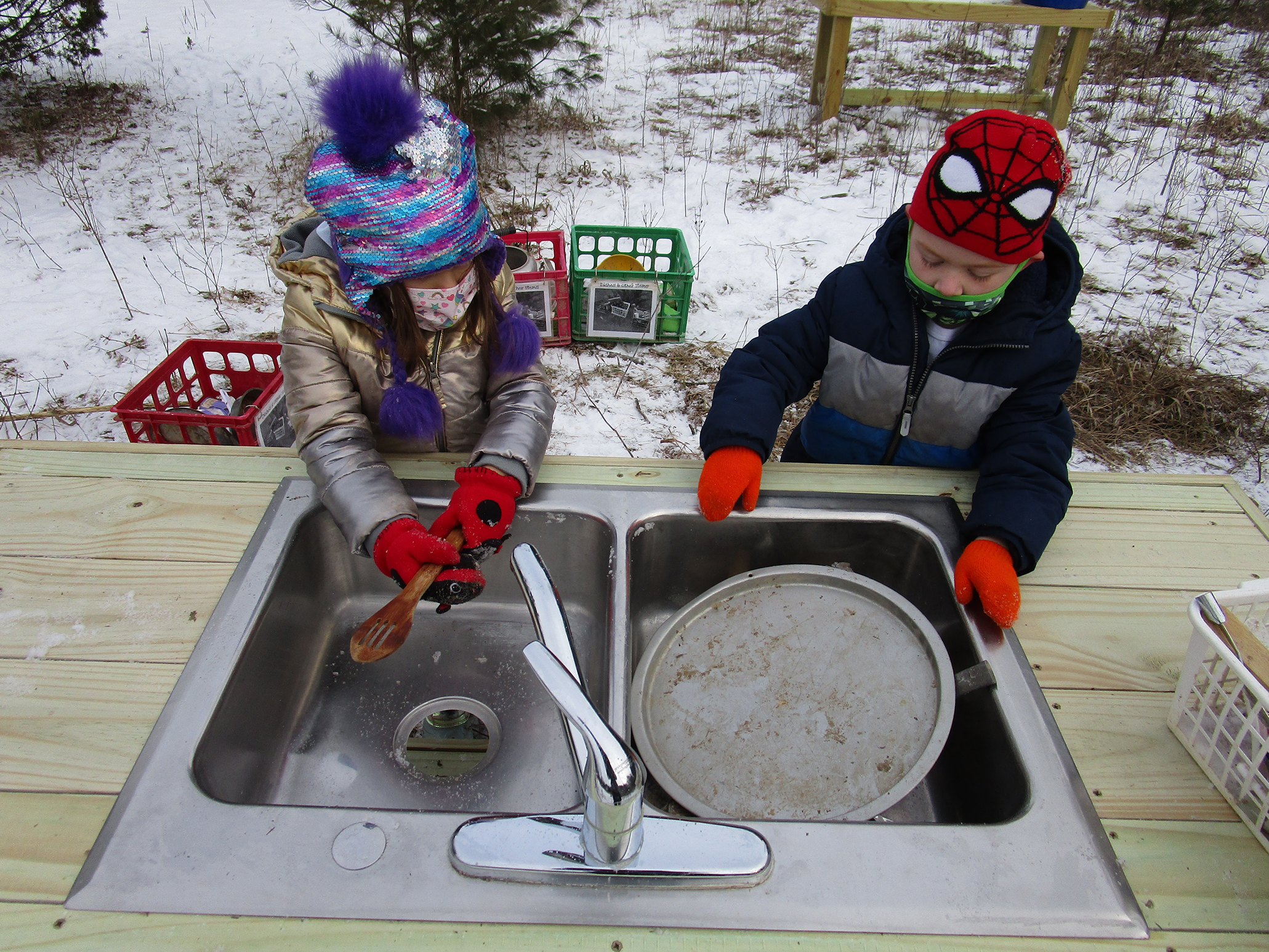
They discovered other fun places walking to and from their indoor school classroom, where they returned for lunch, bathroom breaks, rest time, and recess.
A wooded area along the path where a large number of limbs and branches were scattered—nicknamed The Sticks—became the best spot for fort-building. A grassy area they called The Weeds was perfect for bringing toys out to play. And The Singing Tree was named one day during a heavy rain when the class discovered both wonderful cover and acoustics for a song break under its branches and leaves.
The biggest learning curve has been for Debri, who says it can be difficult to give up control and view distractions as opportunities. Now a fresh blanket of snow means an extra long walk to the classroom with stops for exploring, making tracks, and creating snow angels.
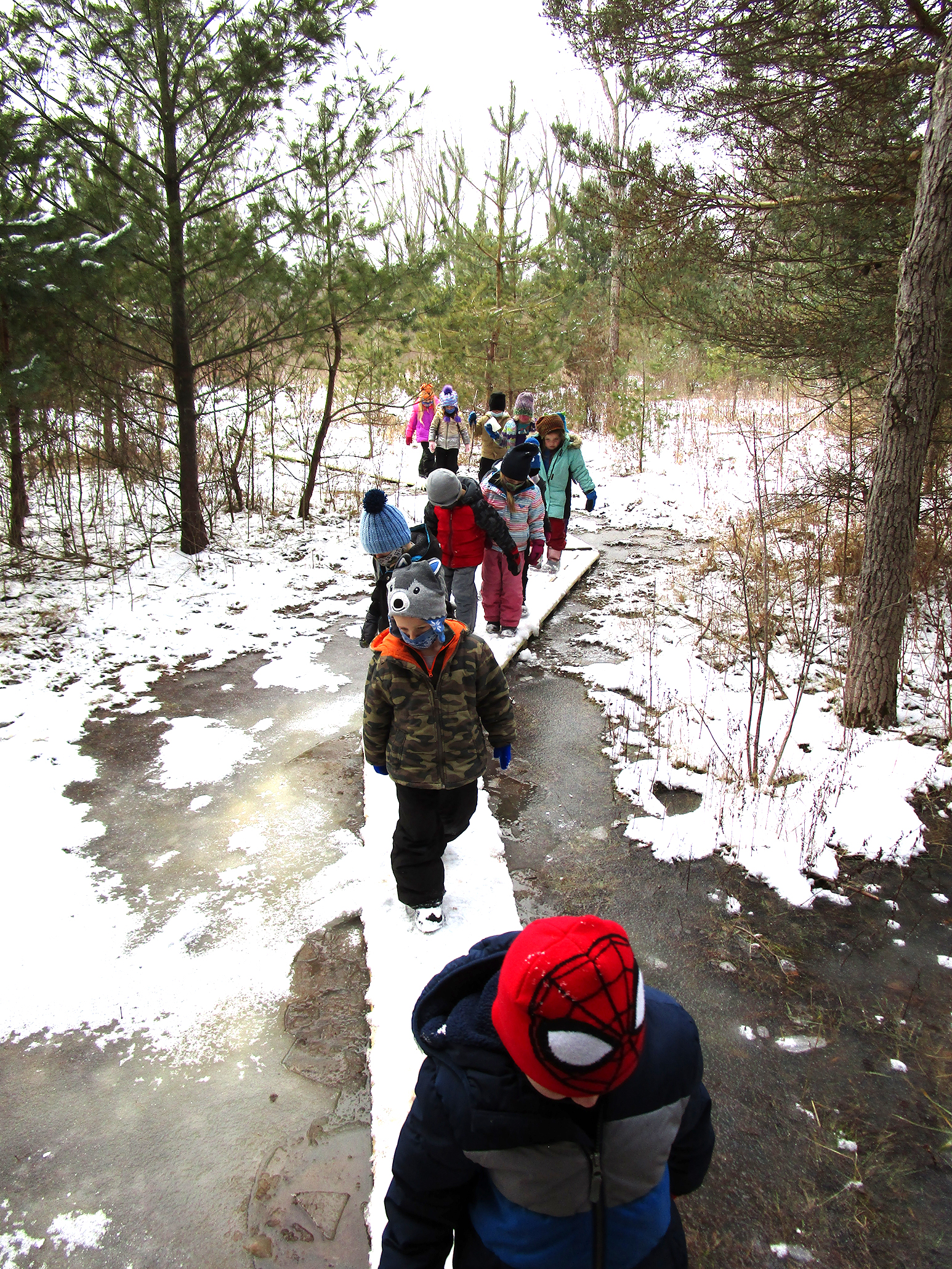
And in a classroom without walls, the occasional cat—and chicken—can wander in for a visit. “It’s just an unpredictable, amazing place to play and explore,” she said.
Even on the hardest days—when cold combined with rain or wind or both—the children were troopers and knew that to be comfortable they must stay dry and keep moving, Debri said.
In fact, the first time that a heavy blanket of rain fell outside during indoor breakfast and prep time, it was Debri who had doubts. “I told my teaching partner, ‘I don’t know what to do. What would you do? Would you take them outside?’”
“And she said, ‘Turn around. Look at what your kids are doing.’ I turned around and they were getting on their ponchos, because they knew that’s what we do.”

